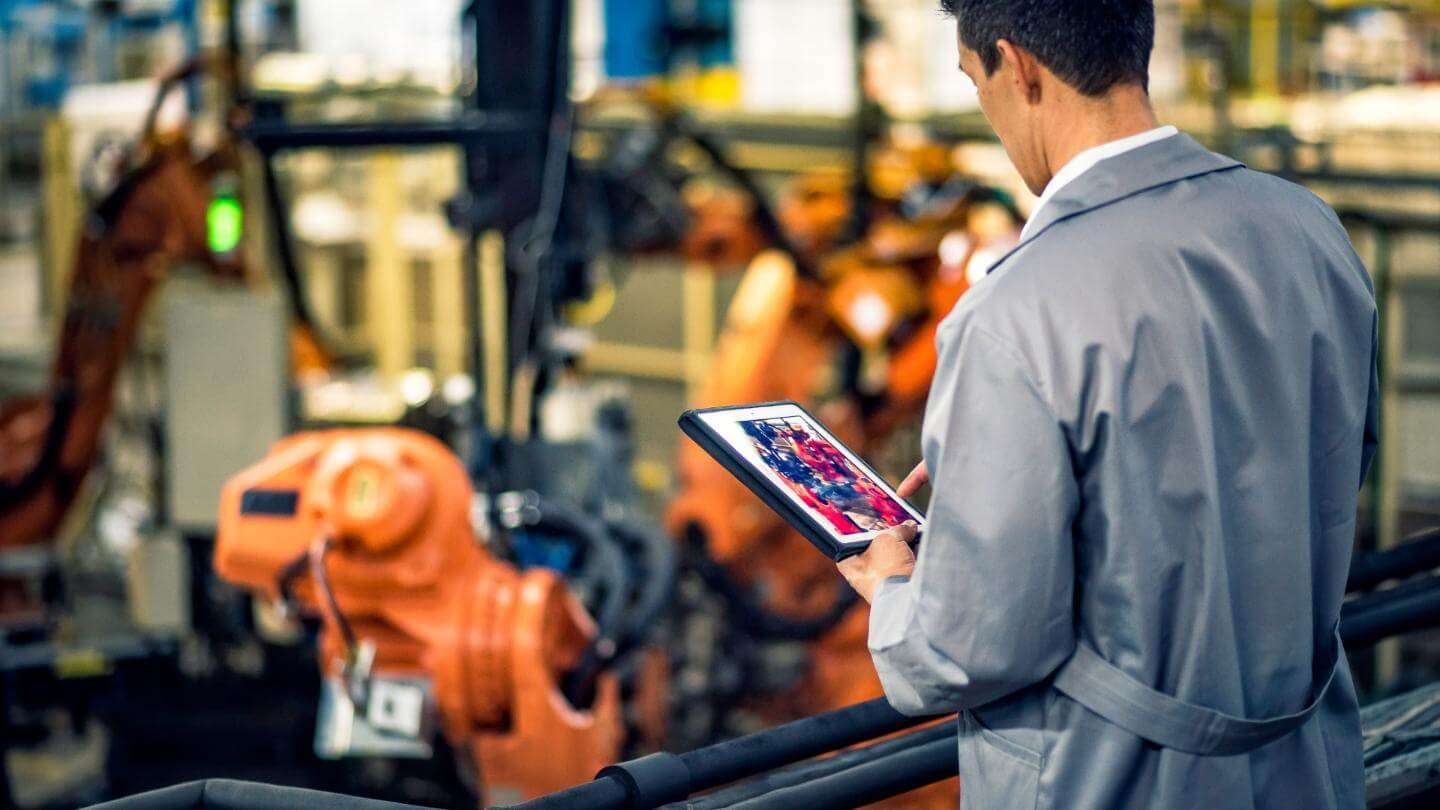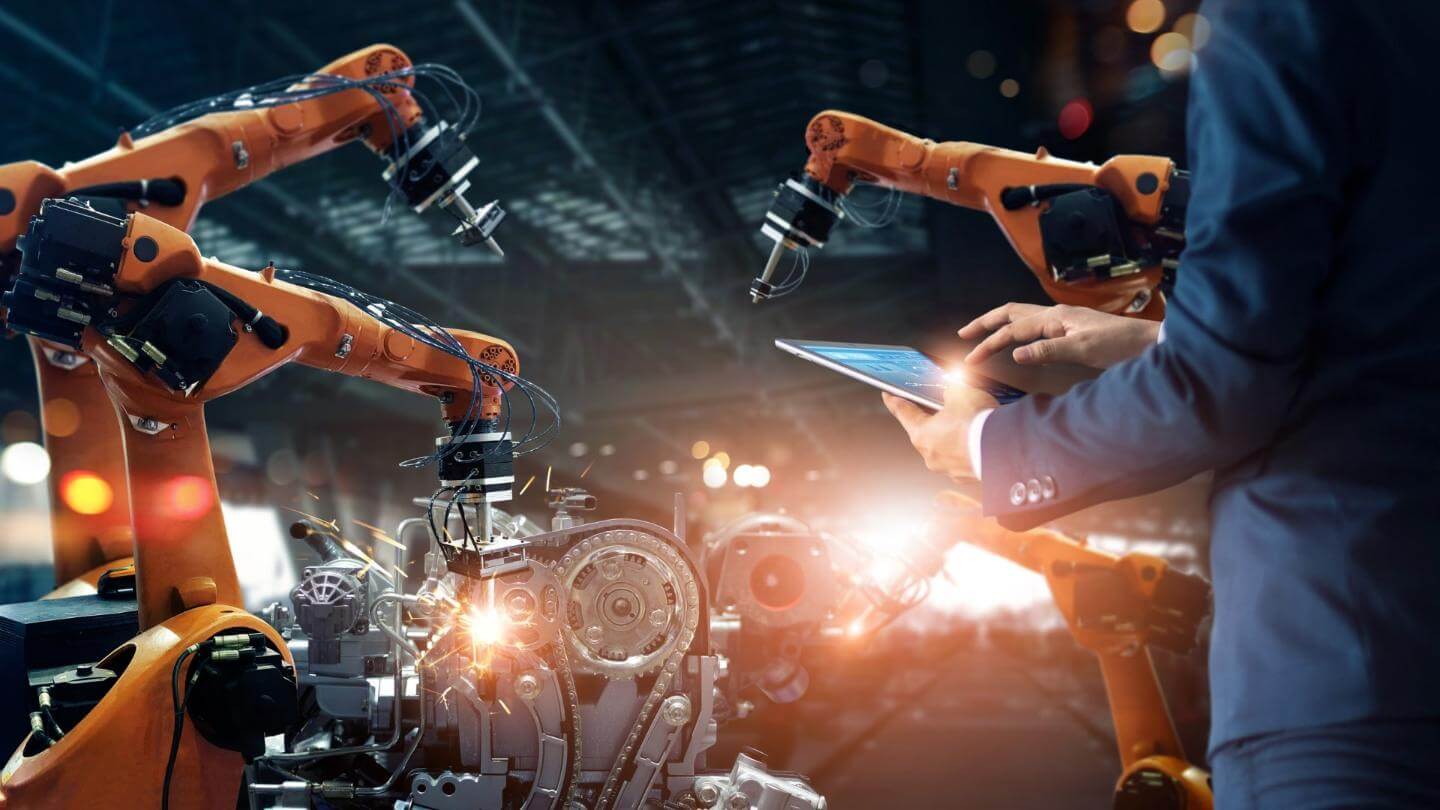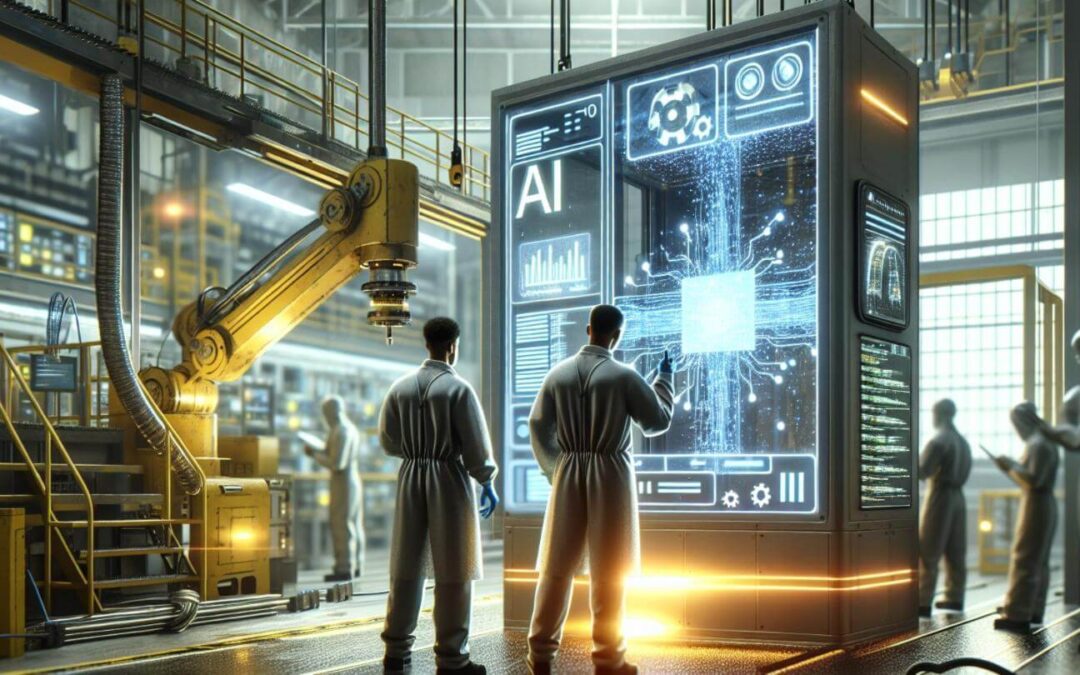In 2023, an IBM report listed several impactful trends in the manufacturing sector. It’s no surprise that artificial intelligence was one of the leading forces IBM listed that are set to change how the entire industry operates.
We wholeheartedly agree with that assessment. AI is here to stay, changing many facets of manufacturing, including product development, quality assurance, equipment maintenance, supply chain, and worker productivity. Here are some ways AI is already impacting — and will continue to impact — the manufacturing sector.
Key Challenges the Manufacturing Industry is Facing
AI can be applied to solve many challenges facing the manufacturing industry, including:
- Supply chain disruptions. Supply chain disruptions led to an average of $82 million in annual losses per company in 2023. Caused by geopolitical tensions, trade conflicts, and natural disasters, supply chain disruptions have led to shortages of raw materials, increased costs, and delayed production schedules. With such memories fresh in manufacturers’ minds, many want to build more resilient and flexible supply chains.
- Skills gaps and labor shortages, especially in skilled positions like machinists, engineers, and technicians. A skills gap contributes hugely to the labor shortage, as adopting advanced technologies requires workers with expertise in AI, robotics, and data analysis. By 2030, an estimated 1 million unfilled jobs in manufacturing will result from a lack of skilled labor.
- Environmental impact. Currently, the manufacturing sector accounts for one-fifth of global carbon emissions and 54% of the world’s energy usage. Manufacturers are under growing pressure to reduce their environmental impact, comply with regulations, and meet consumer demands for sustainable products. This involves investing in green technologies, improving energy efficiency, and redesigning products and processes for sustainability. Balancing these initiatives with cost control and competitive pricing is a significant challenge.
- Evolving consumer expectations. Consumer demand for quality and sustainable products is increasing. For instance, consumers increasingly want all-electric vehicles. Making high-quality products is always top of mind, too. Good intent (such as environmental stewardship) and competence (creating high-quality products) are two key characteristics of sustainability that customers use to judge brands.
How AI is Shaking Up the Manufacturing Landscape

AI is already changing the manufacturing sector and is poised to make more drastic changes over the next five years.
AI is driving efficiencies that lead to reduced costs and increasing profit margins. AI saves firms money by creating efficient scheduling for worker shifts and reducing energy consumption. By allocating resources appropriately through high-demand times, AI can help companies perform maintenance during quieter times to lower operational costs. Logistics and inventory can also become streamlined.
When working with customers, AI is also changing how manufacturing companies respond. About 60% of manufacturers say intelligent bots help reduce the number of customer interactions they have by answering simple questions.
Companies are using AI to optimize their supply chain. For example, manufacturers can analyze shipping documents using natural language processing (NLP) and provide managers with valuable information on improving processes within the supply chain.
We also can’t talk about AI without talking about robots. Robots performing the actual manufacturing work, such as assembling pieces, is no longer a sci-fi concept. Robots take up less space and don’t need breaks like humans do. Goldman Sachs estimates that 300 million jobs will be either downgraded or lost completely by automation. That’s not a bad thing — automation has provided an economic boost to many manufacturers that struggle to find qualified employees.
Examples of how AI is Impacting Facets of the Manufacturing Sector
AI is impacting many different facets of the manufacturing sector. For example, it’s used in ways that improve product quality. Major food producer Kraft Heinz used AI to fine-tune its tomato paste creation, using predictive analytics and sensors on production lines to detect potential failures, be more efficient with maintenance, and reduce production downtime.
Architecture is another surprising facet of manufacturing that AI is changing. FREYR, a company that designs and creates environmentally friendly lithium-ion battery manufacturing facilities, used AI to create 3D virtual twins of manufacturing plants. The software allowed them to create representations of the plant, machinery, robots, products, automated guided vehicles, and other pieces necessary for a facility to function. By first building a virtual factory before investing in the physical facility, FREYR could validate that manufacturing processes are optimized for efficiency and human safety and that people would have ergonomic workspaces.
Of course, companies want to keep high production rates. AI is helping companies design products that can be created faster and with fewer materials. A great case study of this is BMW. The car manufacturing company uses AI to run real-time digital twin simulations as it builds its first electric car manufacturing facility in Hungary. The company used AI to combine data from various systems and tools to have a unified view of their products, which will help them produce cars faster.
The Impact of AI on the Manufacturing Workforce

AI isn’t only changing the actual manufacturing processes and the products that are manufactured. It’s also changing the roles of workers. No longer are workers doing tedious tasks; software is doing most of the menial, repetitive work on its own. Bain & Company estimates that AI will significantly cut down on labor time, chopping administrative services work by 40%, manufacturing and engineering work by 35%, and transportation by 31%.
If workers aren’t doing repetitive tasks, what are they doing instead? According to the National Association of Manufacturers (NAM), workers will learn new skills to focus on tasks involving problem-solving, complex reasoning, and overseeing AI-supported processes and machines. Companies will likely update job descriptions to reflect the skills they need from employees in the next five to seven years. They will need workers with the following key skills:
Advanced technical manufacturing:
- Operating, maintaining, and programming advanced manufacturing, including CNC machines, 3D printers, and robotics
- Knowledge of and ability to work with advanced materials
Data analysis and management:
- Industrial Internet of Things (IIoT)-driven data analysis
- Understanding of data management practices and principles
Software development and engineering:
- Designing and maintaining manufacturing software systems
- Knowledge of and ability to work with digital manufacturing processes
Cybersecurity:
- Ability to protect sensitive data and manufacturing items from cyber threats
Systems engineering and integration:
- Designing, integrating, and managing complex systems, including hardware and software components
Supply chain management:
- Understanding of complex global supply chains and logistics
Soft skills:
- Problem-solving, teamwork, creativity, adaptability, and continuous learning
The manufacturing sector will also need to hire more talent with AI-related skills, such as data scientists and machine learning programmers.
Getting Started with AI: Key Considerations for Manufacturing Companies
If your manufacturing company is just starting to incorporate AI into company operations, here are some foundational tips to help you get a solid start:
- Focus on data. Lean on purpose-built, vertical solutions. Good AI models require good data and people with the right expertise. Getting the data into usable condition and hiring talent to build AI models may be expensive. An alternative to a custom-built AI solution is to invest in a data-centric vertical AI platform. For example, an automated anomaly detection tool could replace or augment human workers tasked with quality control in the factories. There are also platforms like Tulip, which empowers manufacturing engineers to build and customize the tools they need in a low-code manner to leverage AI to analyze and respond to operator feedback.
- Prepare for organizational redesign. The manufacturing industry will have a widespread need for new roles and operating models. If companies rely on AI-generated insights, there will need to be a human layer that systematically governs data quality and automation results. As AI changes how people work, we must adapt organizational structures to match. Some new organizational structures with AI include hubs, spokes, and execution teams. Hubs are central executive functions that align strategy with analytics and execution. Spokes are the strategic business units where the AI functionally operate and are managed by human teams. In contrast, execution teams collect data, train models, and work to launch an AI-powered capability at the spokes level. This organizational redesign focuses labor on strategy and work that only humans can do, while AI takes over the more transactional, repetitive tasks.
- Start with a few use cases. Find a handful of use cases that are both valuable and feasible (meaning they can be prototyped and released fairly quickly, in weeks or a few months). Think about applying generative AI and other technologies to targeted initiatives to learn, develop skills, and secure early wins that can be used to build organizational momentum and gain buy-in. To get quick wins, work with a small team; design and deploy the minimum viable solution to validate the value of the AI use case.
Managing AI Projects Through a Lifecycle Approach
Because there are many use cases for applying AI within your company, it’s important to take a deliberate approach to AI projects so you can deliver tangible business benefits quickly. The approach we recommend is the AI lifecycle. This approach starts with identifying a few concrete problems first and generating AI solution ideas. Then, a small, qualified group will evaluate all proposed AI ideas and narrow the list down to just a few for prototyping. Decisions are made based on the use cases’ value, feasibility, and risks.
This approach emphasizes the importance of developing prototype (or pilot) solutions first to validate the value hypotheses of AI use cases (“Will this AI solution increase this business KPI by Z percent?”) and using feedback from the pilot to decide whether an AI solution is ready for wider implementation, it needs refinement, or it needs to be stopped altogether.
Once decision-makers decide that certain prototype solutions are worth implementing more widely, a small, interdisciplinary team thinks through all potential implementation hurdles and addresses them to maximize the chances of the solution gaining traction. Once a new AI solution is rolled out, a team monitors its usage and business benefits and makes adjustments to ensure it delivers the expected business value.
This approach helps companies sustainably implement AI solutions at scale. It also allows you to adequately manage risks and ensure that AI projects are done efficiently.
To further drive business value through your AI projects, try Shibumi’s AI Value Accelerator. This software solution helps companies govern AI projects, manage them through a lifecycle, and drive measurable business value. The centralized AI Idea Hub helps you source ideas centrally from a secure platform, and a prioritization engine helps you leverage out-of-the-box reports to prioritize the AI opportunities that will provide the most ROI. Learn more about our AI Value Accelerator here.

